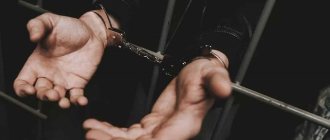It’s not for nothing that the 90s of the last century are called “dashing”. After the collapse of the USSR, it gave impetus to an unprecedented rampant crime. At that time, criminal groups could control entire cities, their influence was reflected in various areas of activity, and large-scale armed conflicts unfolded during the struggle for territory.
Nowadays, only memories remain of bandit gangs. Many of the former crime lords were killed in internecine clashes or received impressive sentences for criminal activities. Fate was more favorable to some of them - they went abroad, opened a successful business or went into politics. Below we will look at several of the most dangerous and influential criminal groups in Russia.
Shamilevskaya organized crime group
One of the most influential and largest criminal groups in the Russian Federation. It was formed in Tolyatti in the early 90s of the last century. Among the main areas of activity, it should be noted fraud on an especially large scale, racketeering, money laundering, and contract killings.
Having taken control of part of the gambling business in the region, the Shamilevskaya organized crime group continued to exist in the 2000s. A former member of this group is Alexander Dovgomel, who later became a deputy of the Samara Regional Duma. Having existed for about 20 years, the Shamilevskaya organized crime group ceased its activities.
The most criminal regions of Russia
Today, the crime rate is determined by the relationship and nature of what happened in the region over a certain period. The statistics are approximate and do little to convey the real state of affairs. After all, each region has a different economic situation, different standard of living and population. Thus, at the end of 2022, the leaders in the number of crimes committed were Tuva and the Trans-Baikal Territory, where 3,000 crimes were committed per 100 thousand people. And in this ranking Moscow is only in 12th place.
These are official statistics, and people have their own rating of criminal regions. The choice of this or that area does not depend on the numerical indicator, but on the general situation, what weight and power the shadow forces have in this area.
Volgovskaya organized crime group
The group was formed in 1992, when Alexander Maslov was released. He became one of the leaders of the Volgovskaya organized crime group. Initially, the gang was engaged in the sale of stolen auto parts. Gradually, its influence in this area increased, and after a few years, the total income of the organized crime group exceeded $400 million a year.
To become the largest supplier of cars in the region, the gang had to enter into multiple armed conflicts with competitors. As a result of one of these confrontations, Maslov dies. He is replaced by his close friend Dmitry Ruzlyaev, who was killed in his car in 1998.
The Volgovskaya organized crime group ceased to exist in the early 2000s. Most of the gang members died as a result of conflicts. The survivors were sentenced to prison.
"Slonovskaya"
This gang was formed in Ryazan in 2001. She helped the Volga group fight for influence. The Slonovskaya organized crime group was founded by driver Nikolai Maksimov and taxi driver Vyacheslav Ermolov. At first they were engaged in covering up other local bandits who were in the community with them. This is how they raised their first money.
Gradually, the gang began to engage in new, larger-scale frauds: trading in automobile products, racketeering, and then taking control of factories. It is sometimes believed that this group controlled almost the entire city.
She began a confrontation with another local group, the Ayrapetovskaya group. Its leader was Viktor Airapetov. During his meeting with Vyacheslav Ermolov, a fight broke out. After some time, the Slonovskaya gang attacked the club where members of the Ayrapetovskaya group were located. Soon Nikolai Maksimov was killed. In 1995, Viktor Airapetov was killed. In 1996, law enforcement authorities arrested gang members.
Shchelkovo organized crime group
A criminal group that has launched active activities in the city of Shchelkovo, located in the Moscow region. It was organized in the mid-90s of the last century and is known for its particular cruelty.
Initially, the gang took control of the Shchelkovsky Biokombinat village. Subsequently, the organized crime group expanded its sphere of influence, engaging in murders, robbery and kidnappings in various regions of the Russian Federation. The Shchelkovskys were distinguished by their special attitude towards competing groups. Instead of negotiating and dividing territory, they preferred violence and murder. According to the investigation, members of the Shchelkovo organized crime group killed more than 60 bandits and businessmen.
At the same time, they managed to cover their tracks well, because operatives only got on the trail of the gang in the early 2000s. In 2009, during a major operation, most of the members of the organized crime group were taken into custody. The leader of the group, Alexander Matusov, is currently under investigation. He was caught in Thailand in 2014 and extradited to the Russian Federation.
The most high-profile cases
Each region has its own most criminal and dangerous cities in Russia. In the Rostov region - these are Shakhty, in the Ivanovo region Rodniki and Vichuga, in the Moscow region - Lyubertsy and Balashikha, in the Khanty-Mansi Autonomous Okrug - Tyumen, Perm, Syktyvkar, Irkutsk, Vologda.
The most brutal and high-profile crimes of the last 5 years, which occurred in different regions of the country:
- In 2016, former Deputy Prime Minister Boris Nemtsov was shot dead. The murder of such a prominent politician caused a lot of noise all over the world; oppositionists argued that the “hand of the Kremlin” was visible here and Boris Nemtsov suffered for his bold views that contradicted the official ideology.
- In 2009, Stanislav Markelov and Anastasia Baburova were shot dead. The killers were soon caught; they turned out to be representatives of a nationalist group.
- Perhaps the most controversial and mysterious murder occurred in 2006 in London, when former State Security officer Alexander Litvinenko died of polonium poisoning. FSB officers are still considered to be guilty in this case.
Despite the fact that the gangster years of the 90s are long gone, the criminal echoes of this time still remain. Many people prefer to solve problems using force.
Moscow, Krasnodar, the southern regions, as well as distant regions in the North-East of the country continue to be considered the most criminal regions of Russia.
Malyshevskaya organized crime group
It was one of the most authoritative criminal organizations in St. Petersburg. Founded by Alexander Malyshev in the late 80s of the last century. Having been released from prison, the future leader “worked” as a “thimble maker” at the Sennaya market. At that time, the market was under the control of the Tambov organized crime group.
Within a short time, Malyshev managed to unite about 2 thousand bandits, creating his own organized crime group. And first of all, he decided to attack the Tambovskys, making them his sworn enemies.
The peak of activity of the Malyshevskaya organized crime group occurred in 91-92 years of the last century. At that time, the group controlled the restaurant, hotel and gambling businesses in St. Petersburg. Conducting criminal activities, Malyshev was arrested several times. But criminal cases were quickly dropped, and the crime boss found refuge abroad. When the situation was more or less settled, he returned to the Russian Federation and continued to conduct gangster activities.
By the mid-90s, the Tambovskys were able to shake the leading position of the Malyshevskys, having dealt with most of the members of this organized crime group. Malyshev himself survived and hid abroad for a long time. Only in 2008 was he detained in Spain, where he served his sentence until 2015. Now he lives in St. Petersburg.
AN ENDANGERED SPECIES
Until the 90s, they tried to stay away from “wet” matters - the code of thieves forbade taking up arms and killing. But in the hard years, both this and other internal laws began to be violated.
In the film “Antikiller” based on the book by Danil Koretsky (retired police colonel), the hero of Sergei Shakurov, a thief of the old way, returns after a long imprisonment, and all his “colleagues” have acquired cool cars, palaces and other luxuries. “A thief shouldn’t live like that,” says Shakurov’s character. However, criminals of this type very quickly turned into an endangered species.
In the second half of the 1990s, lawyer Igor Bushmanov For example, he led the case of one of the most fierce Moscow region gangs of that time - Nikolai Kapuscha. The thugs killed rich shop workers, “shuttle workers” (entrepreneurs who transported various goods from abroad) and police officers. The most terrible episode is the massacre of businesswoman Elena Larina, her common-law husband and three children.
“In the 90s, there were still thieves in law who lived according to old concepts that prohibited having a family, luxury goods, etc.,” continues Bushmanov. “I once talked to someone like this: I spent almost my entire life in camps and was released not so long ago. Very simple clothes, an apartment in a five-story Khrushchev building, no expensive watches or chains. But at the same time, he has unquestioned authority in his environment. Now there are no such copies anymore.
Tambov organized crime group
One of the largest and most influential gangs, under whose control was the territory of St. Petersburg and the Leningrad region. The Tambovites also controlled the northern parts of the Pskov, Novgorod and Karelian regions. The gang was created by natives of Tambov, Vladimir Kumarin and Valery Ledovskikh.
Initially, the “Tambovskys” controlled the “thimbles”, being under the auspices of the Velikolukskaya organized crime group. However, subsequently a separate group was formed that was engaged in extortion and robbery.
In the early 90s of the last century, the ranks of the Tambov organized crime group included about 500 athletes who participated in internecine clashes and put pressure on intractable citizens. Thanks to establishing connections with major politicians, the bandits were able to directly influence the economy of the region. The group received income from gambling and timber exports.
In 1995, members of the Tambov organized crime group began to actively legalize capital acquired by criminal means. At that time, they almost completely controlled the fuel and energy market in the region.
In the 2000s, the group finally ceased to exist. Many active gang members were convicted or killed. Vladimir Kumarin received a sentence in 2007 for the attempt on the life of businessman Sergei Vasiliev.
Izmailovskaya organized crime group
It is considered one of the oldest organized crime groups in Russia, whose activities began during the times of the USSR. The Izmailovo organized crime group was formed in the mid-80s of the last century. The group included former members of the capital's youth gangs. At the peak of its existence, the Izmailovskaya organized crime group consisted of 450-500 fighters.
The group conducted activities in the following areas:
Have a question for a lawyer? Ask now, call and get a free consultation from leading lawyers in your city. We will answer your questions quickly and try to help with your specific case.
Telephone in Moscow and the Moscow region: +7
Phone in St. Petersburg and Leningrad region: +7
Free hotline throughout Russia: 8 (800) 301-39-20
- robberies;
- racket;
- opening of private security companies;
- “laundering” of proceeds through the gambling business.
The money obtained from crime was invested in real estate. The gang leaders created a whole network of jewelry enterprises that brought in good income. The Izmailovskaya organized crime group ceased to exist in the mid-90s. Then, in addition to wars with rival gangs, the Izmailovites had to fight law enforcement officers who carried out periodic raids.
"Kurganovites"
The Kurgan organized crime group, like many groups of that time, consisted of athletes. And its characteristic feature was that they were all clean before the law and were engaged in Komsomol activities that were encouraged at that time. In their hometown, where the gang began its activities, it was called “Komsomol”.
The leaders of this Russian organized crime group were Andrei Koligov, Vitaly Ignatov, Oleg Nelyubin. The group was particularly tough. Everyone who did not want to obey her faced inevitable death. Its leaders claimed that absolutely everyone around them was cannon fodder.
Gradually, the leader of the Orekhovites, Sergei Timofeev, took over the Kurgan team. Then the tasks of the group changed - the main type of its activity became the fight against competitors. It is known that the war between the Kurganovites and the Koptevskaya and Baumanskaya organized crime groups was very brutal.
Although many members became official businessmen and taxpayers by the end of the 1990s, retribution for their deeds did not escape them.
"Uralmash"
An organized crime group created in 1989 in Sverdlovsk, and named after the plant of the same name. The leaders of the group were the Tsyganov brothers. The gang included up to 500 people. After the murder of Grigory Tsyganov in 1991, his younger brother Konstantin became the leader of Uralmash.
In 1994, Konstantin Tsyganov went abroad, hiding from the investigation. From this moment on, the organized crime group is led by Alexander Khabarov. In the mid-90s of the last century, the group became a powerful tool in the political arena. In 1996, Uralmash supported Boris Yeltsin in the presidential elections.
Since the second half of the 90s, the Izmailovites began to legalize their income. The leader of the gang, Alexander Khabarov, tries to go into politics, but in 2004 he was sentenced to prison. A year later he is found hanged in his cell. From this moment on, the Izmailovskaya organized crime group actually ceases to exist.
Solntsevskaya organized crime group
One of the largest gangs operating in the Russian Federation. Solntsevo organized crime group was formed in the late 80s of the last century in the city of Solntsevo. The gang's organizers were former criminals who had weight in the criminal world. The Solntsevskys were able to quickly subjugate small groups, gradually moving from racketeering to large-scale illegal operations.
Taking their cue from the American mafia, the bandits began to focus on drug trafficking, organizing kidnappings and contract killings, and selling weapons. In the mid-90s of the last century, the Solntsevskys began to actively invest money in the restaurant and hotel business, bought foreign real estate, and had a stake in the oil business.
In the early 2000s, the group disbanded. Today, the former gang leader, Sergei Mikhailov, is a successful entrepreneur. He gives a significant portion of his income to charity.
New in blogs
After the collapse of the USSR, the new Russia entered an era of troubled times. The law and order system could not cope with rampant banditry. The society was agitated by chilling rumors about the powerful “brotherhood”. But time put everything in its place, and the “dashing 90s” became just one of the dark pages of Russian history. Our story today is about its “heroes” - the ten most authoritative gangster groups in the post-Soviet space.
1. “Volgovskaya” organized crime group
The founders of the gang are Tolyatti natives Alexander Maslov and Vladimir Karapetyan.
The group earned its initial capital by selling stolen auto parts from VAZ. The gang was finally formed in 1992 after the release of Maslov. He managed to win over fighters from the rival group Vladimir Vdovin (“Partner”) to his side. Among them were Dmitry Ruzlyaev (“Dima Bolshoi”) and Valery Spitsyn (“Valera the Dangerous”).
Dmitry Ruzlyaev
As a result of a confrontation between two gangs, on November 13, 1992, Maslov was shot near his home. The organized crime group was headed by his close associate Ruzlyaev. After the corporatization of VAZ Volgovskaya, the organized crime group was the first to organize companies to sell factory products. At the peak of its activity, the gang controlled half of the cars shipped, its income exceeded $400 million a year.
This is how Dmitry Ruzlyaev is buried
Ruzlyaev was killed in his car in April 1998. By the early 2000s, the organized crime group had virtually ceased to exist: most of its members either died as a result of internecine conflicts or received long prison sentences.
2. “Slonovskaya” organized crime group
The group was formed in 1991 in Ryazan. It was headed by Nikolai Maksimov (“Max”) and Vyacheslav Ermolov (“Elephant”).
At first, the brigade of “Elephant” and “Max” protected the local “thimblemen”. Then she switched to fraud when buying cars, extortion from cooperators and enterprises.
In 1993, the gang’s relations over spheres of influence with the group of Viktor Airapetov (“Vitya Ryazansky”) worsened. After the athlete Airapetov severely beat “Elephant” at the shooting range, an open war began between them.
Elephant gang
In November 1993, “elephants” killed eight and wounded nine “Ayrapet” fighters in the Ryazselmash club with heavy machine gun fire. "Vitya Ryazansky" survived, taking cover behind a column in time. His retaliatory blow was the murder of Maksimov in March 1994.
After the death of the leader, the organized crime group was headed by Vyacheslav Ermolov, declaring a hunt for Airapetov. After a series of unsuccessful attempts, they managed to kidnap “Ryazansky” in 1995 under the guise of Moscow riot police.
Vyacheslav Ermolov
In 1994-96, the “elephants” committed approximately 85 contract killings. The liquidation of the group began in 1996, and arrests of its members spread throughout Ryazan. In 2000, 22 more active members of the gang were sentenced, but its leader, Vyacheslav Ermolov, escaped justice without a trace.
3. “Shchelkovskaya” organized crime group
The group, operating in the town of Shchelkovo near Moscow, was particularly cruel even for the underworld. It was organized in the mid-1990s by the criminal “authority” Alexander Matusov (“Basmach”).
Alexander Matusov
The gang controlled the Shchelkovsky Biokombinat village. Later she began to engage in robbery, contract kidnappings and murders in other Russian regions. The Shchelkovskys were distinguished by the fact that in case of conflicts they did not enter into negotiations with competitors, but killed them. The investigation showed that the organized crime group was responsible for 60 murders of businessmen and bandits.
Law enforcement officers got on the trail of the Shchelkovites only in the early 2000s, while investigating the case of the Kingisepp accomplices. Most of the members of the organized crime group were taken into custody in 2009, but its leader, Basmach, managed to escape. In 2014, Matusov was detained in Thailand and extradited to his homeland. He is now under investigation.
4. “Malyshevskaya” organized crime group
One of the most authoritative gangster organizations in St. Petersburg was founded by repeat offender Alexander Malyshev in the late 80s. After his release, he worked at the Sennoy market as a “thimbler” under the control of the Tambovskaya organized crime group.
Soon Malyshev created his own group, uniting up to 2,000 bandits from the former USSR. In 1989, the first gun conflict occurred between the “Tambov” and “Malyshev” fighters, which made them mortal enemies.
Gennady Petrov and Alexander Malyshev
This was followed by the arrest of Malyshev and Gennady Petrov. After their quick release, both authorities fled abroad. When the criminal case was dropped, both “brothers” returned to their homeland and resumed criminal activity. The peak of the organized crime group came in 1991-92, when the Malyshevskys controlled the hotel, restaurant and gambling business of the northern capital.
In the mid-90s, the Tambovskys ousted the Malyshevskaya organized crime group, having dealt with most of its members. Malyshev and Petrov again found refuge in Europe, where they continued their criminal business of laundering illegal proceeds. In 2008, Spanish police detained 20 criminals in the “Russian mafia” case. Petrov was released and released to his homeland for medical reasons. Malyshev served time in prison in Spain until 2015, then also returned to St. Petersburg.
5. “Tambov” organized crime group
One of the most influential gangs that controlled in the 1990s and early 2000s. the territory of St. Petersburg and the Leningrad region, as well as the north of the Novgorod, Pskov and Karelian regions.
It received its name in honor of its leaders - Vladimir Kumarin (Barsukov) and Valery Ledovskikh, natives of the Tambov region. The brigade began its criminal activities with control over the thimbles under the wing of the Velikolukskaya organized crime group.
In 1989, Kumarin, Ledovskikh and 72 other members of the organized crime group were convicted of extortion. Having replenished its ranks with strength athletes to 500 people, establishing corrupt connections with major politicians, the gang began to control wide areas of foreign economic and criminal activity - from timber exports to gambling. Since 1995, the Tambovites moved on to legalizing their criminally acquired capital: they organized a network of private security companies and seized a monopoly on the fuel and energy market of St. Petersburg.
Vladimir Barsukov (Kumarin)
The decline of organized crime groups began in the early 2000s. Many active gang members were killed and imprisoned. In 2007, Barsukov-Kumarin was convicted of organizing an assassination attempt on businessman Sergei Vasiliev.
6. “Izmailovskaya” organized crime group
One of the oldest criminal groups in the capital has been known since the mid-80s. United youth gangs in the wake of opposition to the “Lubers” and Chechens. The leader of the Izmailov gangs was Kazan authority Oleg Ivanov. The organized crime group, numbering up to 500 fighters, consisted of two separate associations: the Izmailovskaya and Golyanovskaya organized crime groups.
Anton Malevsky, Valery Dlugach
The gang began its activities with robberies and “protection protection” for businessmen. Later, in alliance with former secret service employees, she opened a network of private security companies. Under their cover, she purchased weapons and laundered proceeds through the gaming business. The organized crime group invested its income in foreign real estate and created a network of jewelry enterprises.
The defeat of the Izmailovskys began in the mid-90s through the joint efforts of law enforcement agencies and competing criminal structures. In 1994, Alexander Afanasyev was seriously wounded by police. In 1995, “Misha the Chinese,” the gang’s treasurer, was killed. Viktor Nestruev and Sergei Korolev were detained.
7. "Uralmash"
The UGP was created in 1989 in the Ordzhonikidze district of Sverdlovsk, where the Uralmash plant was located. Its leaders are the Tsyganov brothers - Grigory and Konstantin. Among the authoritative members of the community, which included up to 500 people, we can highlight: Sergei Terentyev, Alexander Khabarov, Sergei Kurdyumov, Alexander Kruk.
Konstantin Tsyganov and Alexander Khabarov
As a result of the war with the “Centers” in 1991, Grigory Tsyganov was killed by a killer. The leader of Uralmash was the youngest of the brothers, Konstantin. In 1994, he fled from investigation abroad, and Alexander Khabarov became the leader of the gang.
Since the mid-90s, the group has become a powerful instrument of political struggle in the country. In 1995, Uralmash supported the regional governor E. Rossel in the election campaign. In 1996 - President Boris Yeltsin.
Khabarov election campaign
Thanks to political maneuvers, the gang became the most powerful criminal structure in the city, and then began to legalize their business. The group disintegrated after the death of its leader Alexander Khabarov. In 2004, he was convicted, and a year later he was found hanged in his jail cell.
8. “Podolskaya” organized crime group
The Podolsk group gained its powerful status largely thanks to its organizer and permanent leader Sergei Lalakin (“Luchok”). Unlike other former leaders of the organized crime group, he has never been prosecuted, is the owner of many large companies and an honorary resident of Podolsk.
Sergey Lalakin with Alexander Povetkin (left)
The Moscow criminal world learned about the emergence of the “Podolsk” gang in the late 80s. Its formation took place according to the classical scheme at that time - from “protection” of the gaming business and currency fraud to control over trading enterprises, banks, and oil companies.
Sergey Lalakin - honorary citizen of Podolsk
In addition to Podolsk, the Chekhov and Serpukhov districts of the Moscow region came under the influence of the group. At the peak of his activity, Lalakin managed to surpass the legendary Sylvester in terms of his income and connections.
In the 90s, during bloody showdowns, dozens of organized crime group leaders were destroyed, but Lalakin always managed to get away with it. In the mid-90s, he took up entrepreneurship: he joined the board of directors of several companies and controlled the Metropol Hotel.
9. Solntsevskaya organized crime group
One of the largest criminal communities in the CIS was formed in the late 80s in Solntsevo, in the southwest of Moscow. Among its organizers are former criminals: Sergei Mikhailov (“Mikhas”), Dzhemal Khachidze, Alexander Fedulov, and the Averin brothers.
The Solntsevskaya organized crime group controlled Moscow hotels, including the Radisson-Slavyanskaya, CDT, Kosmos, and clothing markets in the southwest of the capital.
Sergey Mikhailov (Mikhas)
By uniting smaller brigades, the Solntsevskys moved from traditional racketeering to large-scale illegal actions. Following the example of the American mafia, their main activities were: drug trafficking, organizing contract killings and kidnappings, and selling weapons. In the mid-90s, they began investing in the hotel and restaurant business, carried out financial fraud using a network of banking structures, had a share in oil production, and bought real estate abroad.
Today, the former leader of Solntsevskaya, Sergei Mikhailov, is a successful entrepreneur and generous philanthropist.
10. “Orekhovskaya” organized crime group
The most influential gang of the 90s was formed in 1986 in the southern district of the capital. Its main participants were sports youth living in Orekhovo-Borisovo. The leader of the criminal community is Sergei Timofeev (“Sylvester”).
Orekhovskaya lads at karate training
At the beginning of his criminal activities, he controlled the capital's thimblemakers. In the late 80s, the Orekhovskaya organized crime group united with the Solntsevsky gang on the basis of opposition to the Caucasians. In those years, Timofeev spent three years behind bars on charges of extortion from cooperators.
After his release in 1991, the bandit managed to gather many other criminal groups under his control. A distinctive feature of the Orekhovsky brigades was the denial of criminal concepts.
In its best times, the Orekhovskaya organized crime group had control over approximately 30 banks in the Central region and such profitable sectors of the economy as trading in gold, diamonds and oil.
Sergey Butorin
The vigorous activity of "Sylvester" was interrupted on takeoff: he was blown up in his car. In the bloody confrontation for the place of leader, the “team leader” of the organized crime group, Sergei Butorin, won.
Alexey Sherstobitov
At the moment, the killers of the Orekhovskaya organized crime group, Alexey Sherstobitov and Alexander Pustovalov, who committed many high-profile murders, are serving long sentences. Sergei Butorin was extradited from Spain in 2010 and sentenced to life imprisonment.
Hong Kong Triads
Triads are secret societies that were originally patriotic or religious organizations. Today, these are criminal syndicates whose influence extends throughout the world. Unlike the above-mentioned Russian criminal groups, their Hong Kong counterparts still operate today.
Sunyong
This is the largest of the triads at the moment. It includes about 60 thousand people living in different parts of the globe. The name of the group translates as “Happiness, Revival and Justice.”
Initially, the organization included industrialists and workers. Today it includes representatives of various professions and conducts the following activities:
- racket;
- drug trafficking;
- prostitution;
- gambling.
In addition, Soonyong controls most of the illegal migration to the United States and Europe.
14k
We are talking about the most brutal of the triads. Its creators are nationalists and military men who want to overcome communism. 14k was formed after the Second World War.
Today the group includes about 20 thousand people. Main areas of activity:
- "laundering of money;
- supply of opium and heroin;
- arms trade;
- smuggling.
Members of the 14k group are at enmity with the Soonyong triad. They are distinguished by a sharp reaction to conflicts.
Yakuza
Region:
Japan
Areas of activity:
extortion, murder, racketeering, gambling, pimping, drug trafficking, human and weapons trafficking, mediation in obtaining contracts and hiring labor, financial fraud
Japanese mafiosi in all their glory
Origin
Everyone knows that the Yakuza is the Japanese mafia, the main organized crime group of this country, but few people know where this term came from.
And it traces its history back to card games, this is one of the combinations of the game oycho-kabu:
- "I" - eight;
- "ku" - nine;
- "za" - three.
The total comes out to twenty, and this is the worst number in such a card game. And if at first “yakuza” was given to bakuto (players), losers, as a nickname, then later all representatives of Japanese organized crime groups began to be called that.
Japanese criminals and Cosa Nostra have in common their perception of their environment. After hundreds and thousands of years, the patriarchal family structure has passed and has been preserved, which generally affects Japanese society, but in its most direct manifestation it was preserved in the yakuza. Community members perceive each other as their only family, pushing the real family into the background. Here there are attitudes like “father-son”, “brother-brother”. The code of conduct derived here imitates the legendary bushido of the samurai. Yakuza members are required to endure pain, imprisonment, not to reveal the secrets of their community under any pretext, take the blame, speak a special language and know the meaning of tattoos.
There is a place for women in the Yakuza!
Betrayal, misappropriation of other people's income, arbitrariness, drug addiction, and unmotivated violence are strictly prohibited. The punishment for this is the traditional cutting off of the phalanx of the finger, and in serious cases, death.
The three largest Yakuza syndicates are the Yamaguchi-gumi, Sumiyoshi-kai and Inagawa-kai. In the orbit of their activities are more than 70% of the members of Japanese organized crime groups, and in Yamaguchi-gumi.
Structure
The top of the hierarchy is occupied by the chief (oyabun). Directly subordinate to him:
- administrator or senior advisor (saiko-komon/kambu-atsukai);
- a group of senior advisors (sanro-kai);
- chief of staff (so-hombutyo);
- the heads of the main grassroots units: the “senior lieutenant” or regional boss (wakagashira), standing over several gangster gangs in one region) and the “junior lieutenant” (shateigashira).
Saiko-komon has subordinates:
- legal consultants (singiin);
- accountants (kaikei).
Wakagashira and shateigashira have subordinates:
- commanders of various ranks (kyodai, shatei, wakashu);
- ordinary gangsters (dekata or kobun);
- beginners (kumi-in);
- trainees (sansita).
The newcomers are members of the poorest sections of the population. The territory under control is called “yakuza-shima”, that is, “yakuza island”. They leave its boundaries only for competitive showdowns or making deals.
The Yakuza should not be viewed as a monolithic organization. It has three main types.
Bakuto. Earnings from gambling and betting, as well as pimping, trade and construction fraud.
Tekiya. Financial speculation, extortion, maintenance of restaurants and nightclubs.
Gurentai. Control of prostitution, trafficking in pornographic products, blackmail, etc.
Despite such “feats,” the authorities often used the yakuza to their advantage when they involved them in suppressing anti-American demonstrations, anti-war protests, and the fight against communism.
This is not least due to the political bias of the representatives of the organized crime group: some of the clans are ultra-right by conviction, while others are very neutral towards xenophobic sentiments, because they themselves come from Korea or China.
Yakuza tattoo
It is impossible to imagine a member of the Japanese mafia without a tattoo - a total design on the body:
Beautiful and terrifying
Anyone who has dealt with body art knows how painful it is to apply them. Such tattoos, like those of the Japanese Yakuza, take up to hundreds of hours to apply, and are designed to show their patience and tenacity of character. Flowers, dragons, sea, forest and mountain landscapes, historical frescoes, etc. are most often painted.
Meanwhile, a little more than two-thirds of the yakuza have tattoos, and many representatives prefer not to “show off” them and even remove them. Perhaps because previously such drawings meant leaving the parental hand, and in Confucianism they were also condemned. The Japanese authorities generally banned their application for 75 years as a barbaric relic.
Good Deeds Yakuza
In January 1995, an earthquake with a magnitude of 7.3 occurred in the city of Kobe. Members of the Yamaguchi-gumi took part in the rescue operation. While the authorities were gathering their thoughts, the bandits independently arranged supplies of water, food and medicine and allocated money for the restoration of destroyed buildings and communications.
In March 2011, an earthquake occurred off the east coast of Honshu, and members of the Sumiyoshi-kai and Inagawa-kai actively helped residents of the affected areas.
In early 2022, when the COVID-19 pandemic began, Yakuza members handed out free masks to people, and companies they controlled went to hospitals, schools and supermarkets and disinfected them.
Not least of all, such help is caused by the desire to increase their status among the ordinary population, to give a heroic and romantic image to the yakuza. It is not for nothing that Japanese organized crime groups have been investing in cinema for many years in a row and are friends with representatives of the Japanese film bohemia.
Fighting the Yakuza
Since the mid-2000s, Japanese authorities finally decided to radically deal with local criminals when they began to make changes to legislation to limit the influence of organized crime groups on society.
So, in 2006, it became prohibited to help the yakuza in social terms, i.e. pay unemployment benefits, give loans, provide benefits, etc.
In the summer of 2007, the government recommended that Japanese businesses themselves stop or severely limit their interactions with the yakuza. The company should also cancel all previous agreements with him and not enter into new ones unless there is a suspicion that they are dealing with people associated with them.
In 2008, a law was passed according to which not only ordinary “fighters” and heads of groups are prosecuted for crimes.
In 2011, a complete ban on companies paying any money and various types of remuneration to organized crime groups came into force.
February 2012 was already marked by foreign intervention, when the American authorities imposed sanctions against the Yamaguchi-gumi, and in September the Sumiyoshi-kai group came under sanctions, whose accounts and assets were frozen and persons associated with them were banned from entering the country.
In March 2013, the boss of the Kodo-kai group from the Yamaguchi-gumi syndicate was arrested for extortion.
Of course, the help and loyalty of the population, who do not want drugs, prostitution and other negative phenomena to spread on their territory, helps in capturing and imprisoning members of the Yakuza. And, of course, the Yakuza do not like this: they destroy enterprises, beat and kill those who are especially zealous in resisting their influence.
An interesting way to combat the mafia is that former gang members are offered jobs and rehabilitation programs to put an end to their criminal past.
Does the Yakuza let people like that go free? Please, only in this case they should cut off the khalange of their finger with a sword or hammer, wrap the stub in cloth and present it to the boss as a token of atonement / as an exit ticket. In case of repeated mistakes, new phalanges are cut off.
As for leaving the circles of the group, a simple chopping off is not enough. The man knows too many secrets of the community. Much more effective is the physical elimination of someone who no longer wants to share their fate with their “father” and “brothers.”
Italian mafia
The word “mafia” itself is mostly associated with Italian criminal gangs. Many people learned about the existence of such gangs from films like The Godfather.
Sicilian Mafia or Cosa Nostra
This is the largest of the Italian criminal organizations, which numbers about 50 thousand people. The main activities are banditry and extortion. Also, Sicilians do not disdain the arms and drug trade.
Camorra
Criminal group based in Naples. It appeared back in the 19th century, gradually strengthening its position through the provision of security and security services. The most successful group among Italian gangs. Today, the organization's annual income is about $5 billion.
Main activities:
- arms trade;
- drug trafficking;
- sexual exploitation.
'Ndrangheta
Italian group from the Calabria region. Annual revenue exceeds $4.5 billion. Actively collaborates with other crime syndicates, including the Russian mafia. The main area of activity is the supply of cocaine.
Latin American cartels
There are a huge number of criminal gangs in South and Central America. The most influential among them are syndicates and cartels.
Los Zetas
Despite its small number (only 4,000 people), this Mexican syndicate is one of the most dangerous gangs in its region. Initially, Los Zetas consisted of former members of elite special forces. Over time, the ranks of the group began to be replenished with army deserters and former police officers.
At the moment, Los Zetas has an impressive arsenal of weapons and consists of individuals who have undergone professional military training. Therefore, we are talking not just about a gang, but about a real private army.
The group operates throughout the world. Among the main activities include drug trafficking, arms trafficking, kidnapping and murder. According to some rumors, members of Los Zetas practice cannibalism.










